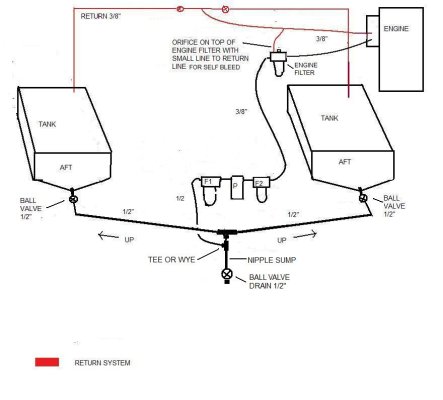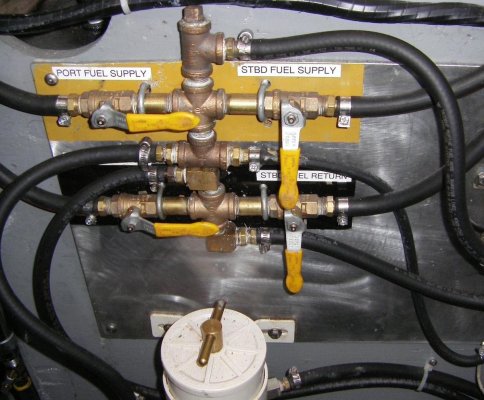Brooksie
Guru
- Joined
- Oct 20, 2007
- Messages
- 1,310
- Location
- USA
- Vessel Name
- Island Seeker
- Vessel Make
- Willard 36 Sedan
Diesel tanks usually have their draw offs in the form of a dip tube / pipe which enters through the top of the tank and goes to within 1" of the bottom. This is the recommended way I guess (required way for gasoline)
However when I replaced my tank 10 years ago, I put the draw valve at the lowest point on the theory that I wanted the sludge/water in a prefilter not caked on the bottom of the tank as happened with the old tank. I have never had a problem in the 10 years since this was done.
I need to have the tanks cleaned in my Willard and I am thinking of repiping them in the same way afterwards.
What say you all?
However when I replaced my tank 10 years ago, I put the draw valve at the lowest point on the theory that I wanted the sludge/water in a prefilter not caked on the bottom of the tank as happened with the old tank. I have never had a problem in the 10 years since this was done.
I need to have the tanks cleaned in my Willard and I am thinking of repiping them in the same way afterwards.
What say you all?



